|
John Tyman's Cultures in Context Series EGYPT and the SAHARA www.johntyman.com/sahara |
|
7.2 The Banks of the Nile Pt. I: 549-575 |
| . |
|
John Tyman's Cultures in Context Series EGYPT and the SAHARA www.johntyman.com/sahara |
|
7.2 The Banks of the Nile Pt. I: 549-575 |
| . |
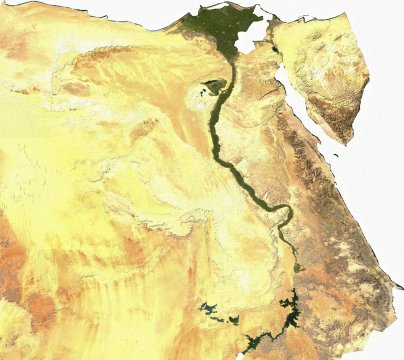 |
| .549. The greatest oasis of them all -- that nourished by the waters of the Nile -- lies on the eastern edge of the Sahara in Egypt. The tract of land that can be irrigated from this great river is narrow in the south, but broadens to the north close to the Mediterranean Sea. (Satellite image at Wikipedia ) |
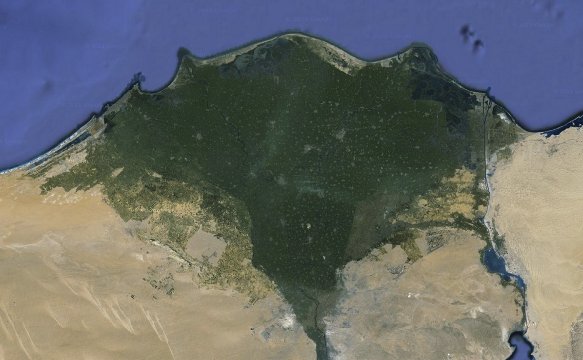 |
| .550. Where water can be applied to its surface the land is green: everywhere else it is brown and lifeless, for water is the key to life -- in a country where less than 5% of the land can be cropped. (Satellite image of delta at Satview.files.wordpress ) |
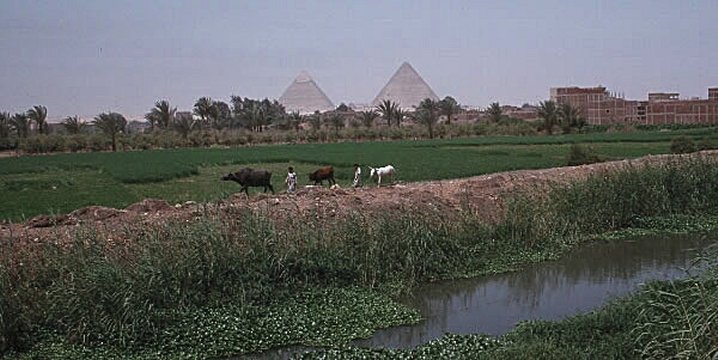 |
| .551. Beginning in the 19th century, major works were undertaken to control the Nile. Levees were built to constrain floodwaters, and dams and deep canals built, making it possible to irrigate a large part of the valley throughout the year and allow three harvests per annum. Drainage was improved as well as irrigation. (Levee and canal near Giza courtesy www.geol.umd.edu ) |
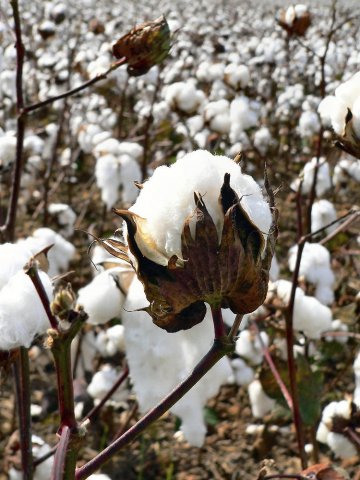 |
| .552. A veritable agricultural revolution followed the introduction of cotton in the 19th century. Within 50 years Egypt became one of the world’s leading producers of high-grade cotton, much of which was exported. Unfortunately, the commercialization of agriculture led to many small farmers being forced off their land to work as agricultural labourers on the large farms of rich landowners. (Egyptian cotton courtesy Baumwolle at eg.all.biz ) |
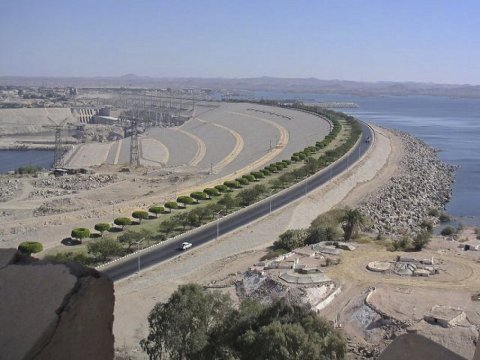 |
| .555. The Aswan High Dam, built by the Soviet Union and finished in 1971, created the largest man-made lake in the world. The original Aswan Dam, built by the British between 1898 and 1902 simply was not high enough. (Aswan High Dam at egy-king.blogspot.com.au) |
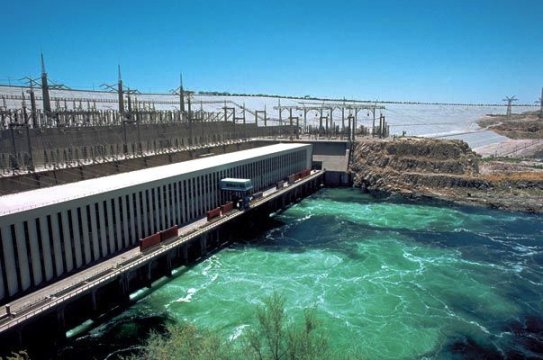 |
| .557. The High Dam allowed for a 30% increase in Egypt’s arable area and a doubling of the country’s supply of electricity. It has also led (it is said) to a rise in the water table beneath adjacent desert areas. (Aswan hydro-electric power station with High Dam behind: courtesy Orlova-tpe at Wikipedia) |
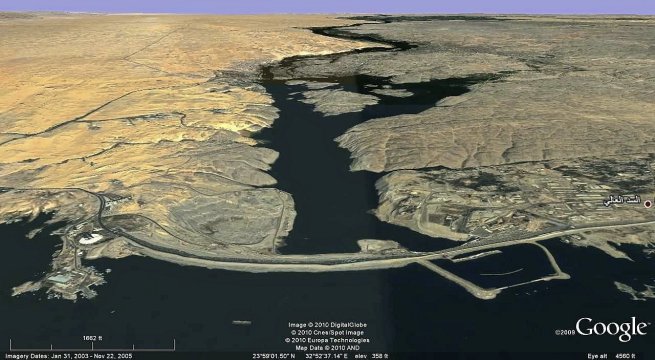 |
| .558. The High Dam was a massive undertaking, but its influence was not wholly beneficial. It blocked the flow of the silt critical to the fertility of soils downstream -- resulting in a dramatically increased demand for artificial fertilizers, which are not only expensive but have ecologically damaging side effects ... including increased salinity of ground water, and the collapse of the fishing industry at the mouth of the river. (Panorama courtesy geo4u.edublogs.org ) |
 |
| .559. And there are public health problems also, because there is no season now when the canals dry up, killing the insects that live there. The bilharzia parasitic worm is the most dangerous, living in snails that thrive in warm slowly moving waters. They have been a problem in Egypt for a long time, but now more than ever. They rarely kill: instead they penetrate internal organs and drain the strength from their host. In China they solved a similar problem by draining the canals. (Skin vesicles on forearm indicating penetration by the bilharzia parasite: courtesy United States Department of Health at Wikipedia ) |
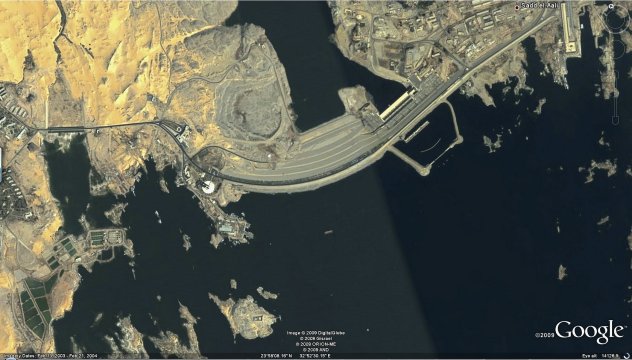 |
| .560. In addition, of course, no one knows when the lake will actually be filled with silt and cease to regulate the flow of the river: only one thing is certain ... that it is bound to happen one day! (Satellite image of Dam at insightdigital.org ) |
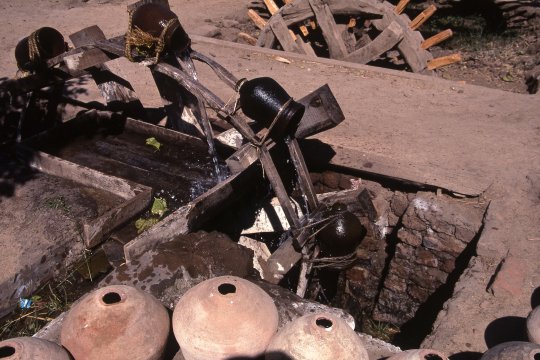 |
| .565. Water wheels, in one form or another, are still used in some areas: but like shadufs they have been largely displaced by pumps -- large and small. (Kom Ombo) |
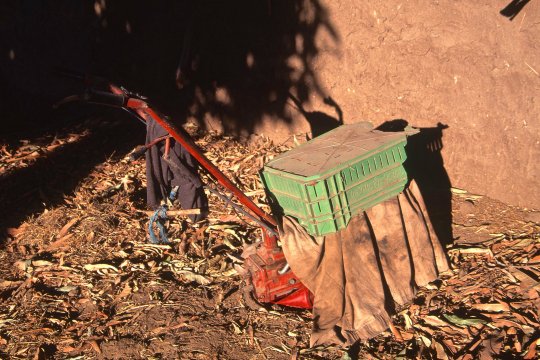 |
| .568. Some farmers have acquired mechanical cultivators with petrol engines, but they are the fortunate few. (Near Edfu) |
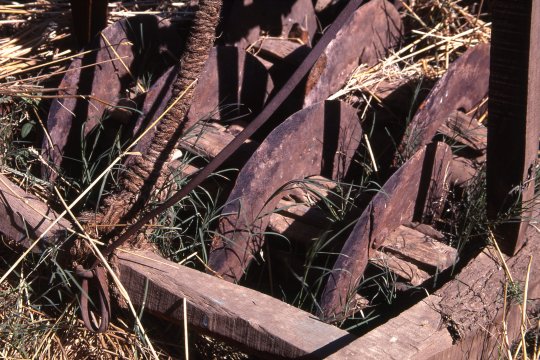 |
| .569. The author also encountered examples of machinery that had been improvised, like this item. It looks like a disc plough or harrow but was used to chop up straw. (Downstream from Kom Ombo) |
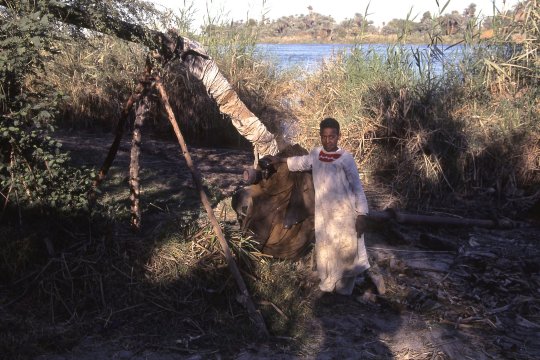 |
| .574. Others are much smaller and water the fields of a single family. They may look improvised but they make it possible to farm throughout the year. (On island near Edfu) |
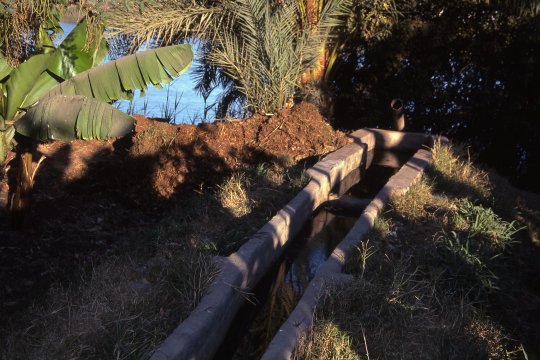 |
| .575. And in both cases water is carried to fields in main channels lined with concrete to minimize loss. (On island near Edfu) |
![]()
Text and photos by John Tyman
unless otherwise indicated.
Intended for Educational Use
Only.
Contact Dr. John Tyman at johntyman2@gmail.com
for more information regarding
licensing.
![]()
www.hillmanweb.com
Photo processing, Web page layout,
formatting and hosting by
William
Hillman ~ Brandon, Manitoba ~ Canada